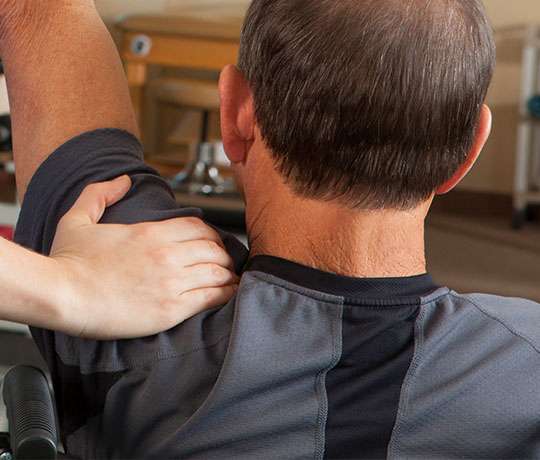
Share on Pinterest
Nabi Tang/Stocksy United
What is EFT tapping?
Emotional freedom technique (EFT) is an alternative treatment for physical pain and emotional distress. It’s also referred to as tapping or psychological acupressure.
People who use this technique believe tapping the body can create a balance in your energy system and treat pain. According to its developer, Gary Craig, a disruption in energy is the cause of all negative emotions and pain.
Though still being researched, EFT tapping has been used to treat people with anxiety and people with post-traumatic stress disorder (PTSD).
How does EFT tapping work?
Similar to acupuncture, EFT focuses on the meridian points — or energy hot spots — to restore balance to your body’s energy. It’s believed that restoring this energy balance can relieve symptoms a negative experience or emotion may have caused.
Based on Chinese medicine, meridian points are thought of as areas of the body energy flows through. These pathways help balance energy flow to maintain your health. Any imbalance can influence disease or sickness.
Acupuncture uses needles to apply pressure to these energy points. EFT uses fingertip tapping to apply pressure.
Proponents say the tapping helps you access your body’s energy and send signals to the part of the brain that controls stress. They claim that stimulating the meridian points through EFT tapping can reduce the stress or negative emotion you feel from your issue, ultimately restoring balance to your disrupted energy.
EFT tapping in 5 steps
EFT tapping can be divided into five steps. If you have more than one issue or fear, you can repeat this sequence to address it and reduce or eliminate the intensity of your negative feeling.
1. Identify the issue
In order for this technique to be effective, you must first identify the issue or fear you have. This will be your focal point while you’re tapping. Focusing on only one problem at a time is purported to enhance your outcome.
2. Test the initial intensity
After you identify your problem area, you need to set a benchmark level of intensity. The intensity level is rated on a scale from 0 to 10, with 10 being the worst or most difficult. The scale assesses the emotional or physical pain and discomfort you feel from your focal issue.
Establishing a benchmark helps you monitor your progress after performing a complete EFT sequence. If your initial intensity was 10 prior to tapping and ended at 5, you’d have accomplished a 50 percent improvement level.
3. The setup
Prior to tapping, you need to establish a phrase that explains what you’re trying to address. It must focus on two main goals:
- acknowledging the issues
- accepting yourself despite the problem
The common setup phrase is: “Even though I have this [fear or problem], I deeply and completely accept myself.”
You can alter this phrase so that it fits your problem, but it must not address someone else’s. For example, you can’t say, “Even though my mother is sick, I deeply and completely accept myself.” You have to focus on how the problem makes you feel in order to relieve the distress it causes. It’s better to address this situation by saying, “Even though I’m sad my mother is sick, I deeply and completely accept myself.”
4. EFT tapping sequence
The EFT tapping sequence is the methodic tapping on the ends of nine meridian points.
There are 12 major meridians that mirror each side of the body and correspond to an internal organ. However, EFT mainly focuses on these nine:
- karate chop (KC): small intestine meridian
- top of head (TH): governing vessel
- eyebrow (EB): bladder meridian
- side of the eye (SE): gallbladder meridian
- under the eye (UE): stomach meridian
- under the nose (UN): governing vessel
- chin (Ch): central vessel
- beginning of the collarbone (CB): kidney meridian
- under the arm (UA): spleen meridian
Begin by tapping the karate chop point while simultaneously reciting your setup phrase three times. Then, tap each following point seven times, moving down the body in this ascending order:
- eyebrow
- side of the eye
- under the eye
- under the nose
- chin
- beginning of the collarbone
- under the arm
After tapping the underarm point, finish the sequence at the top of the head point.
While tapping the ascending points, recite a reminder phrase to maintain focus on your problem area. If your setup phrase is, “Even though I’m sad my mother is sick, I deeply and completely accept myself,” your reminder phrase can be, “The sadness I feel that my mother is sick.” Recite this phrase at each tapping point. Repeat this sequence two or three times.
5. Test the final intensity
At the end of your sequence, rate your intensity level on a scale from 0 to 10. Compare your results with your initial intensity level. If you haven’t reached 0, repeat this process until you do.
Does EFT tapping work?
EFT has been used to effectively treat war veterans and active military with PTSD. In a 2013 study, researchers studied the impact of EFT tapping on veterans with PTSD against those receiving standard care.
Within a month, participants receiving EFT coaching sessions had significantly reduced their psychological stress. In addition, more than half of the EFT test group no longer fit the criteria for PTSD.
There are also some success stories from people with anxiety using EFT tapping as an alternative treatment.
A 2016 review compared the effectiveness of using EFT tapping over standard care options for anxiety symptoms. The study concluded there was a significant decrease in anxiety scores compared to participants receiving other care. However, further research is needed to compare EFT treatment with other cognitive therapy techniques.
The bottom line
EFT tapping is an alternative acupressure therapy treatment used to restore balance to your disrupted energy. It’s been an authorized treatment for war veterans with PTSD, and it’s demonstrated some benefits as a treatment for anxiety, depression, physical pain, and insomnia.
While there are some success stories, researchers are still investigating its effectiveness on other disorders and illnesses. Continue to seek traditional treatment options. However, if you decide to pursue this alternative therapy, consult with your doctor first to reduce the likelihood of injury or worsening symptoms.
Emotional freedom technique (EFT), or EFT tapping, is an alternative treatment that involves applying light pressure points to help reduce stress.
Tapping your way to stress relief may seem a bit “woo woo” at first, but folks often use it to help manage anxiety and post-traumatic stress disorder (PTSD).
Here’s how EFT tapping might help ease your stress levels.

Share on Pinterest
Illustration by Yaja’ Mulcare
What is the EFT tapping exactly?
EFT tapping — also called “tapping” or psychological acupressure — is all about balancing your body’s energy to help transform pain or negative feelings into positive energy.
It was developed by Gary Craig, who built the practice around the belief that both emotional and physical pain are a result of energy imbalances or disruptions.
You can practice tapping on yourself or find an EFT practitioner for an EFT session. Either way, folks apply light pressure to certain meridian points (aka pressure or energy points) through a sequence of tapping.
How does EFT tapping work?
EFT tapping is a lot like acupuncture — minus the needles. EFT uses your fingers to tap 9 of the 12 major meridian points (or pressure points), rather than using thin needles.
It’s thought that by tapping on these areas, you’re sending signals to your brain to control the production of stress hormones.
EFT also involves creating a mantra that identifies and accepts problems causing you stress or anxiety. And rating how you feel before and after the process.
How to use EFT tapping points for stress
Here’s how to practice EFT in five easy steps.
1. Identify the problem causing your stress
Zero in on what’s causing your stress, as this is what you’ll be focusing on during your tapping sesh.
More than one thing stressing you out? For max effectiveness, it’s best to focus on one prob at a time when going through the tapping sequence. You can then repeat the full EFT sequence for the other issues you’re facing.
2. Rate the intensity of your stress
Using a scale of 0 to 10 (with 10 being 🎶 the wooooorst 🎶), rate the issue as you currently experience it. This helps to gauge the level of stress you feel before you start tapping.
3. Create a setup phrase
Choose a phrase to repeat while tapping. This mantra should acknowledge the issue you’re dealing with and then admit self-acceptance.
Try something like “Even though I [insert your issue or fear here], I accept myself and my feelings.”
Focus on how you feel about the issue even if your problem is related to something happening to another person. You can also tweak this phrase.
4. Perform the tapping sequence
During the EFT tapping sequence, you’ll repeat your phrase and use two or more fingers to tap the following points 5 to 7 times:
- Side of hand (SOH). Tap the side of the outside of your hand (also called the karate chop point or KC). Most folks choose to tap with their dominant hand.
- Top of head (TOH). Tap the crown of your head.
- Eyebrow (EB). Tap the inner point of your eyebrow at the edge of your nose. You can choose either side, but only need to do one side.
- Side of eye (SE). Tap the edge of the bone at the corner of your eye.
- Under eye (UE). Tap the bone under your eye.
- Under the nose (UN). Tap the area between your nose and upper lip.
- Chin point (Ch). Tap the crease between your lower lip and the tip of your chin.
- Collarbone (CB). Tap slightly under the collarbone, where your collarbone, first rib, and sternum meet up. Some folks find it easier to place their hand on their chest and tap both CB points, one with the thumb and the other with two fingers.
- Under the arm (UA). Tap on your side, just below your armpit.
Share on Pinterest
Illustration by Yaja’ Mulcare
After the karate chop point, the sequence naturally moves down your body. For points that are on both sides of the body (aka twin points) you can choose whatever side you prefer. You can even switch hands and tap the opposite side of your body. Do whatever feels right!
5. Re-test the intensity
After you’ve finished the sequence, it’s time to re-rate where you are on the intensity scale. On a scale of 0 to 10, how do you feel about the issue you were focusing on?
Compare these results to where you were before you started tapping. Repeat the process until you rate your intensity at a 0.
Takeaway
EFT, or “tapping,” is an alternative treatment that uses acupressure to restore balance to the body and reduce feelings of pain or distress — including feelings of stress and anxiety.
Tapping focuses on nine of the body’s meridian points. By tapping these areas with your fingers while repeating an affirming statement, you may be able to reduce the production of stress hormones and help melt your stress away.
While several studies have found EFT to be an effective stress management technique, other research isn’t so sure. Experts still need to dive deeper into whether or not tapping has legitimate effects on anxiety and stress.
But if it makes you feel good, there are no issues continuing the practice. If anything, it’s a good meditation tool, which can help reduce stress.



